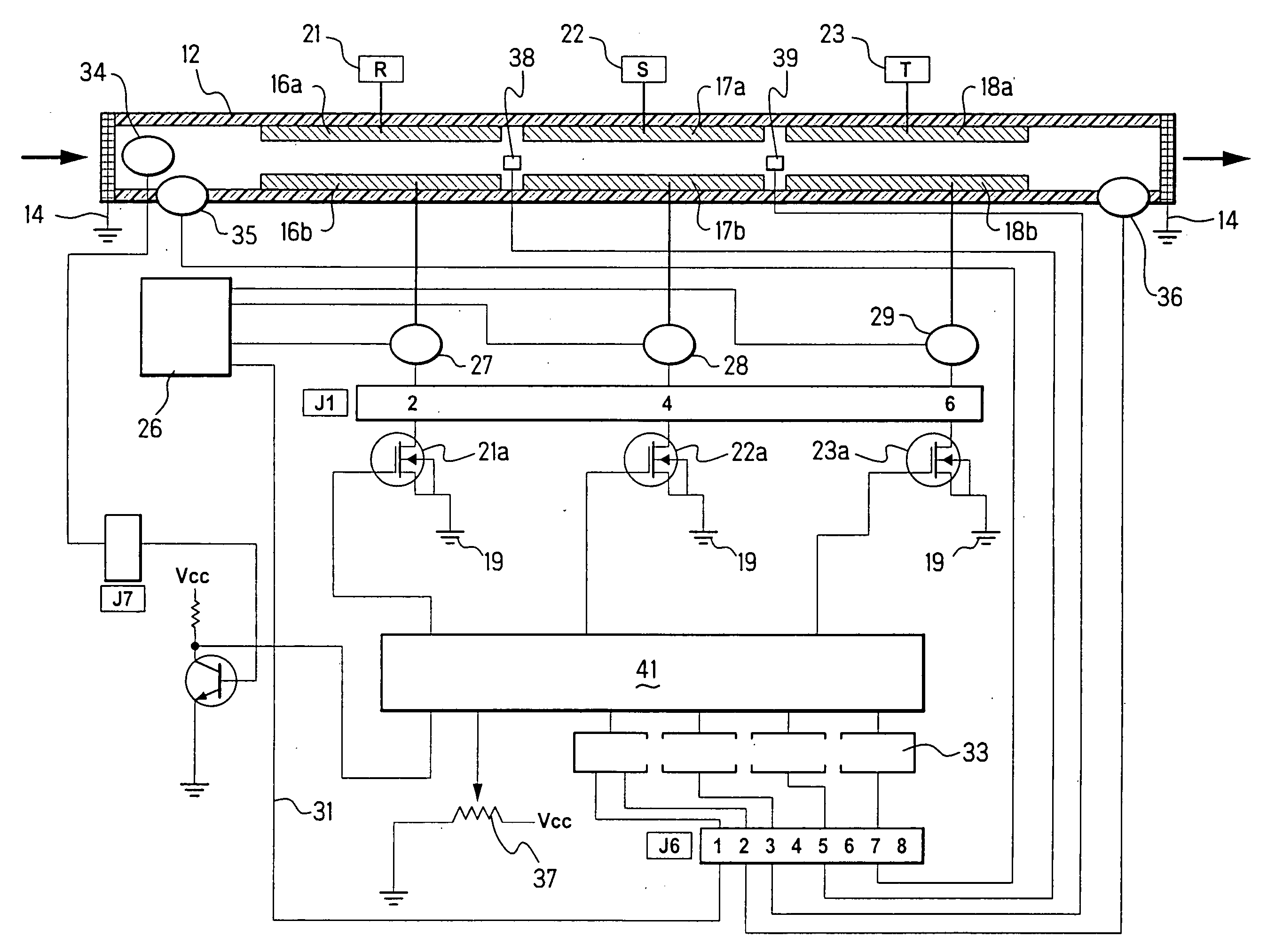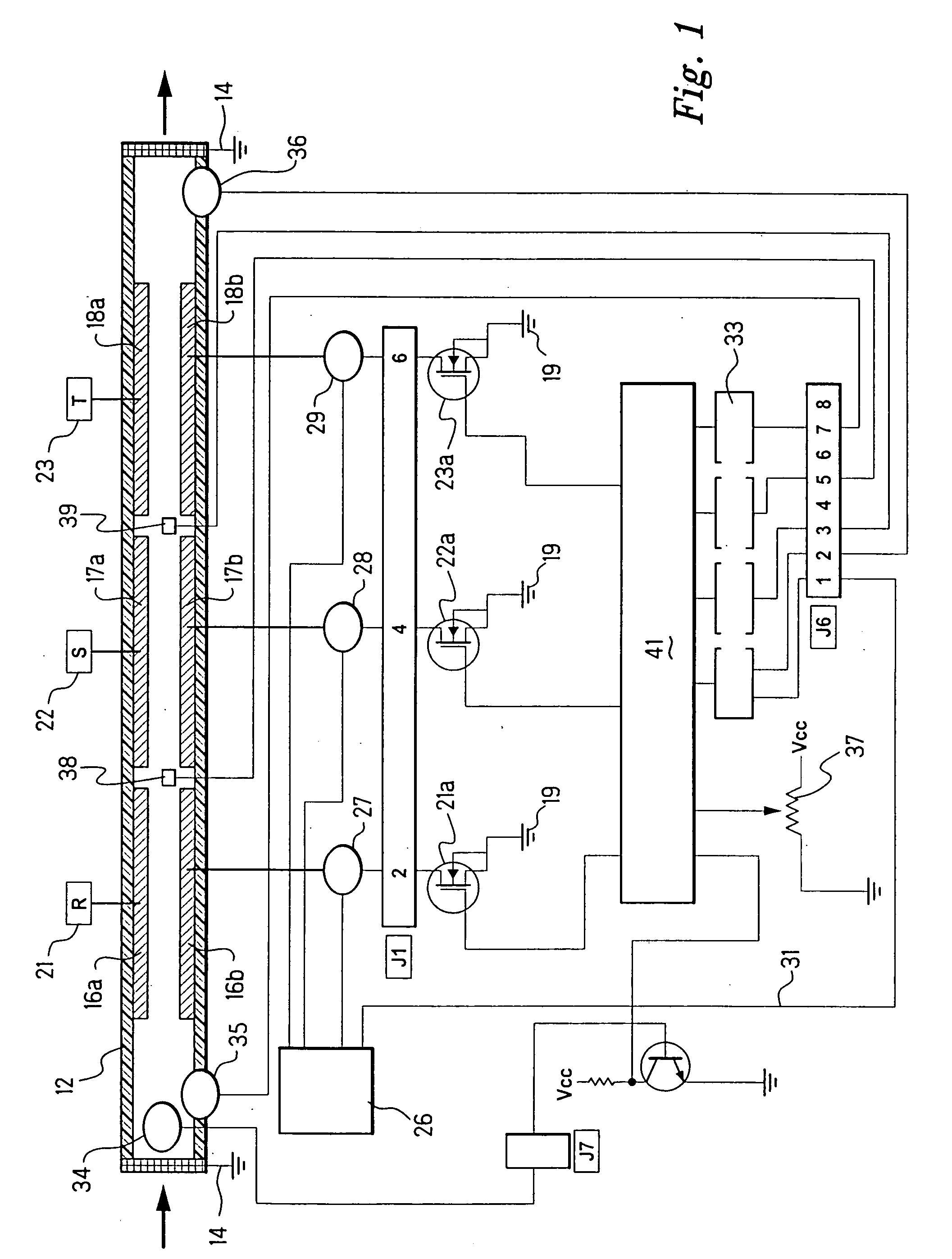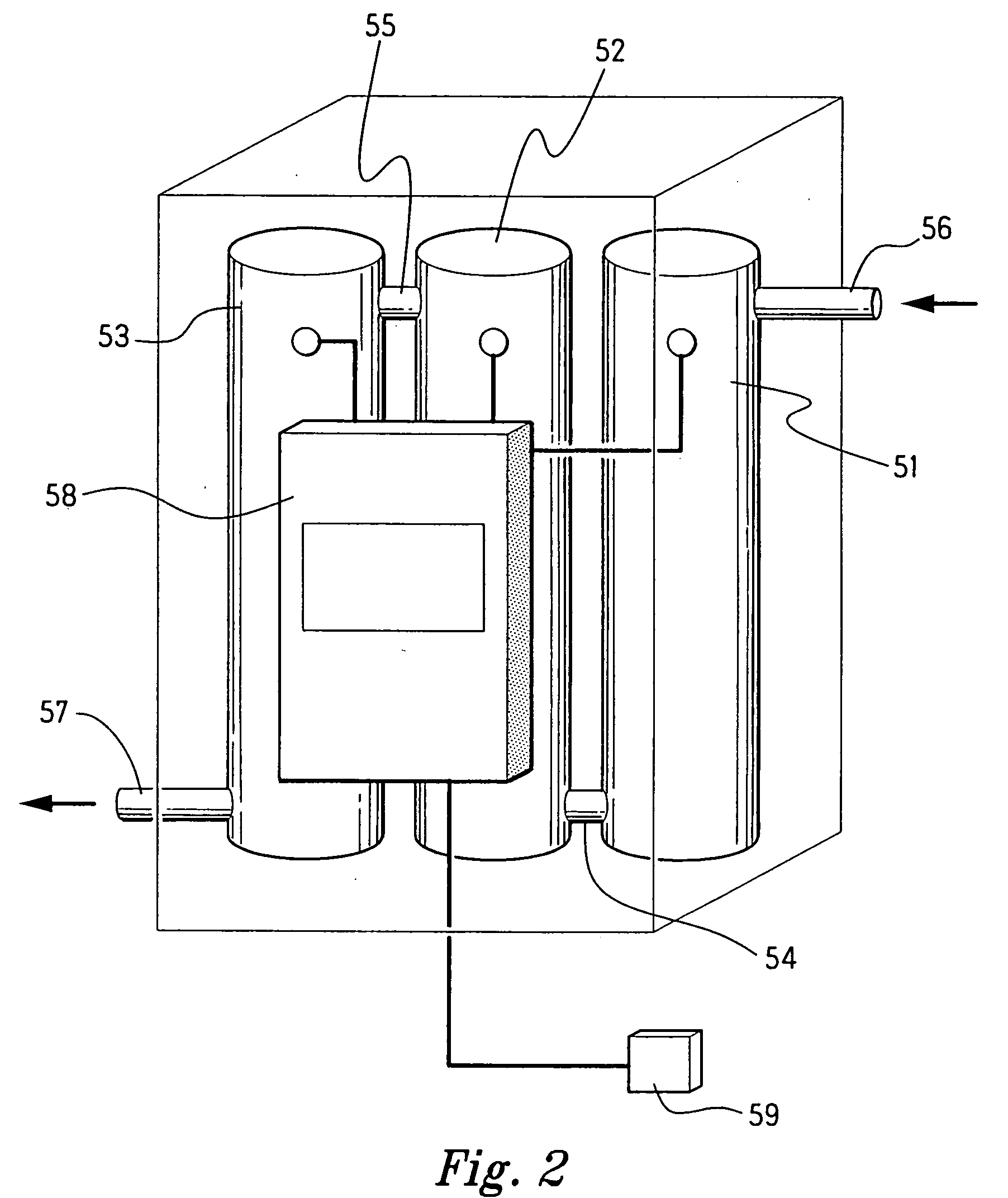System and method for rapid heating of fluid
a fluid heating and fluid technology, applied in lighting and heating apparatus, instruments, applications, etc., can solve the problems of increasing the cost of electric hot water storag
- Summary
- Abstract
- Description
- Claims
- Application Information
AI Technical Summary
Benefits of technology
Problems solved by technology
Method used
Image
Examples
Embodiment Construction
Referring to the drawings, FIG. 1 shows a schematic block diagram of a heating system of one embodiment in which water is caused to flow through a pipe or tube 12. The tube 12 is preferably made from a material that is electrically non-conductive, such as synthetic plastic material. However, the tube 12 is likely to be connected to metallic water pipe, such as copper tubing, that is electrically conductive. Accordingly, earth straps 14 are included at each end of the tube 12 for electrically earthing any metal tubing connected to the tube 12. The earth straps 14 would ideally be connected to an electrical earth of the electrical installation in which the heating system of the embodiment was installed. As the earth straps may draw current from an electrode through water passing through the tube 12, activation of an earth leakage circuit breaker or residual current device (RCD) may be effected. In a particularly preferred form of this embodiment, the system includes earth leakage cir...
PUM
 Login to View More
Login to View More Abstract
Description
Claims
Application Information
 Login to View More
Login to View More - R&D
- Intellectual Property
- Life Sciences
- Materials
- Tech Scout
- Unparalleled Data Quality
- Higher Quality Content
- 60% Fewer Hallucinations
Browse by: Latest US Patents, China's latest patents, Technical Efficacy Thesaurus, Application Domain, Technology Topic, Popular Technical Reports.
© 2025 PatSnap. All rights reserved.Legal|Privacy policy|Modern Slavery Act Transparency Statement|Sitemap|About US| Contact US: help@patsnap.com



